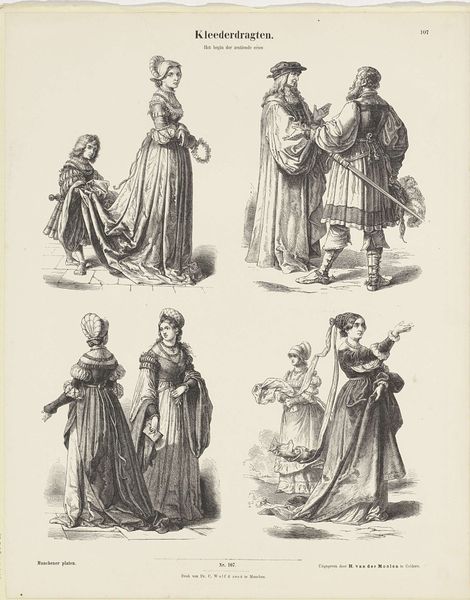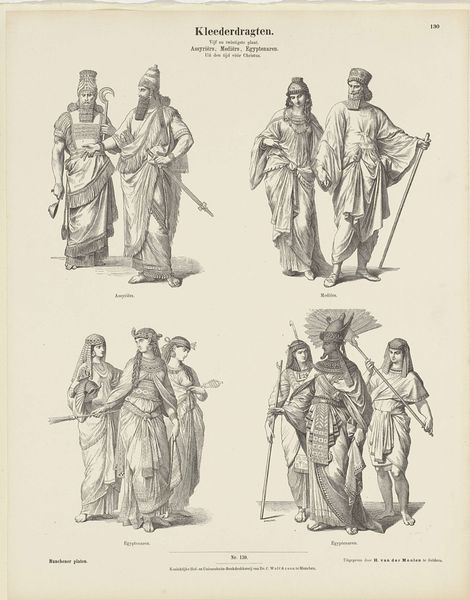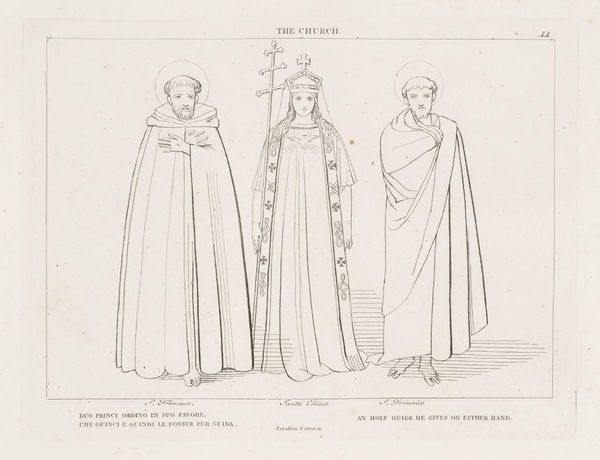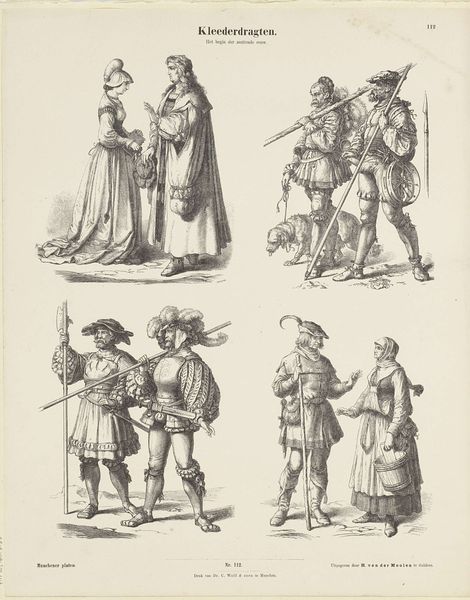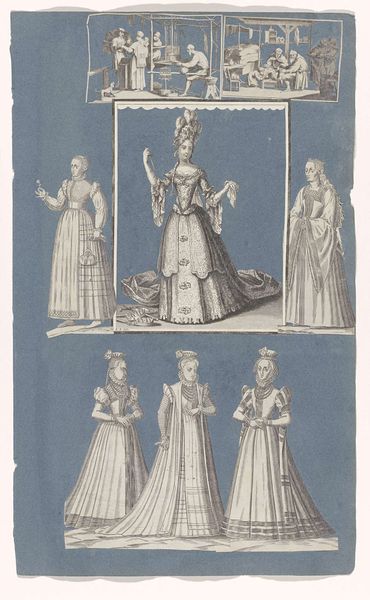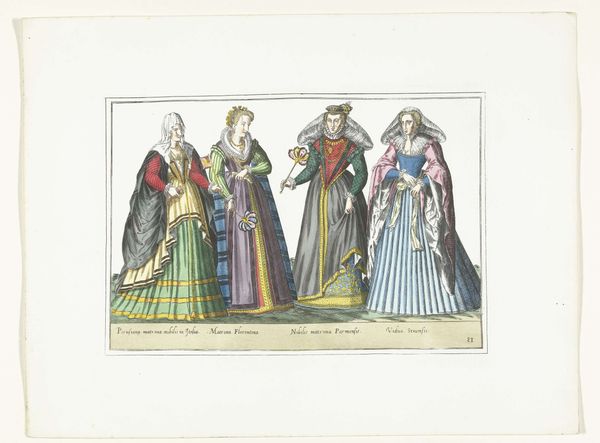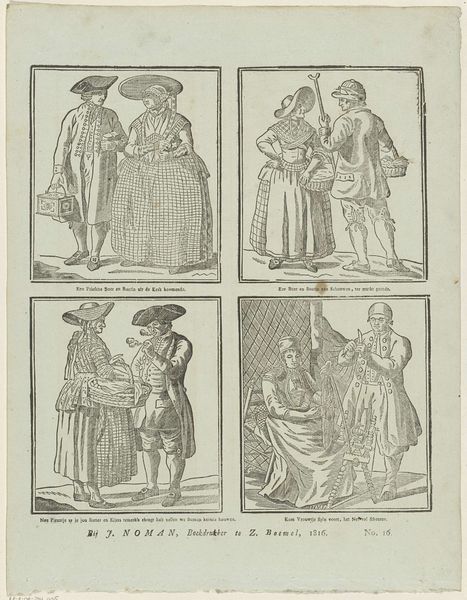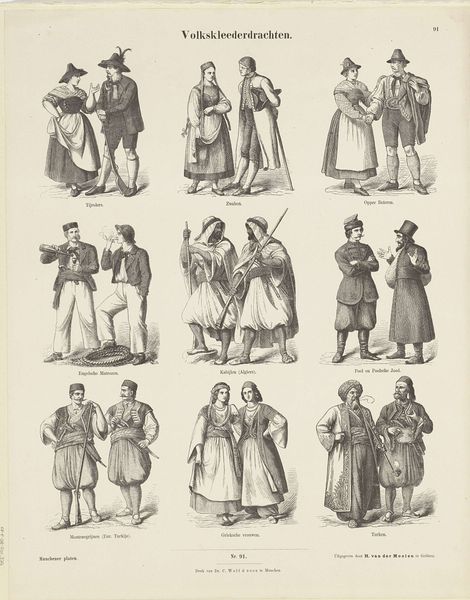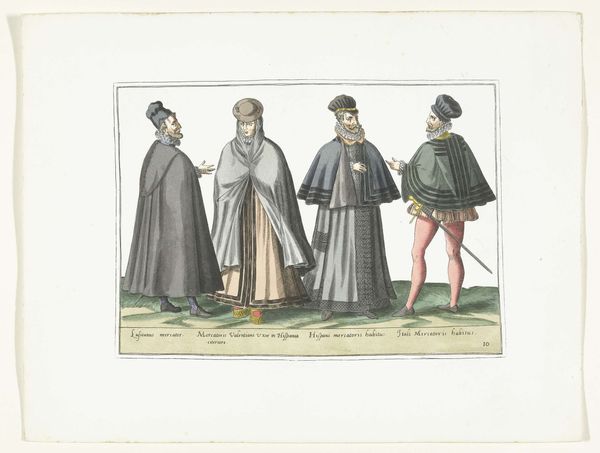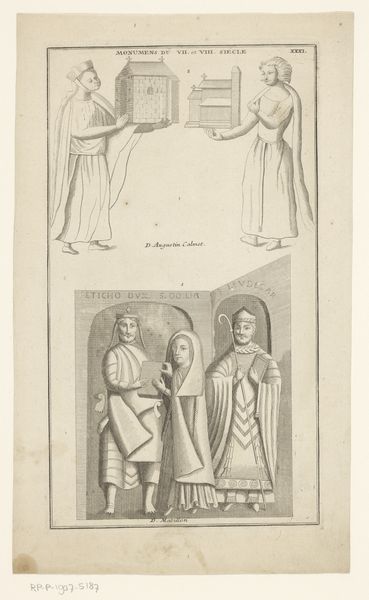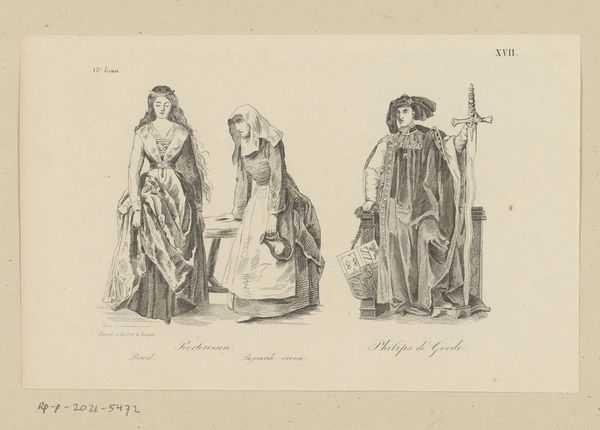
Kleederdragten / Drie en twintigste plaat. / Eerste helft van de bijftiende eeuw c. 1843 - 1920
0:00
0:00
print, engraving
#
medieval
# print
#
figuration
#
engraving
Dimensions: height 445 mm, width 354 mm
Copyright: Rijks Museum: Open Domain
Editor: This is "Kleederdragten," a print, probably an engraving, made sometime between 1843 and 1920 by Ferdinand Rothbart. It illustrates various garments from the early 15th century. I notice how formally the figures are arranged. What can you tell us about this image? Curator: Well, it's important to remember this print was made centuries after the clothing it depicts. Think about the social context in the 19th century, a period very interested in romanticising the medieval period. What kind of function do you imagine images like this had then? Editor: Maybe educational, or perhaps even a form of fashion history. Were they trying to recreate these garments? Curator: Possibly, but more likely this image provided a visual catalogue. Prints like this one circulated widely and influenced perceptions of the past, and were ofter appropriated into stage productions or historical paintings. Notice how precise the engraving is. Does that suggest anything about its intended audience or use? Editor: It does feel meticulous, suggesting perhaps an appeal to a more scholarly or upper-class audience who could appreciate such detail and maybe commission recreations. It seems that historical accuracy wasn’t as prized as the *idea* of history. Curator: Exactly. Consider also how national identity was being constructed in the 19th century. Historical costume played a role in creating a sense of shared past. Editor: So this print isn't just about clothing; it’s a social statement, almost propaganda, packaged in a seemingly neutral historical document? Curator: Precisely. By showcasing these idealized representations, it contributes to shaping how society perceived itself, then and even now. Editor: This changes everything, I thought I was looking at historical record. Curator: Instead it becomes another artifact that provides context of a different era and its intentions.
Comments
No comments
Be the first to comment and join the conversation on the ultimate creative platform.
